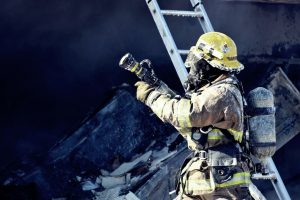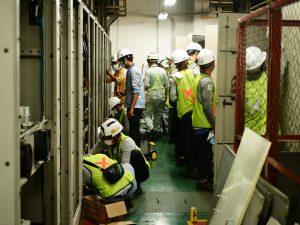The oil and gas industry is one of the most hazardous sectors globally. From offshore rigs to onshore refineries, workers in this field face unique and life-threatening risks every day. The use of Personal Protective Equipment (PPE) isn’t optional—it’s a frontline defense against injuries, long-term health effects, and fatalities. This article explores the specific hazards of the oil and gas industry and the essential role PPE plays in mitigating them.
Why the Oil & Gas Industry is High-Risk
Oil and gas operations involve heavy machinery, flammable substances, confined spaces, and hazardous environmental conditions. These variables increase the risk of:
- Fires and explosions
- Toxic chemical exposure
- High-pressure equipment failures
- Falls from heights
- Noise-induced hearing loss
- Extreme temperature exposure
Working in such conditions requires comprehensive HSE policies and strict PPE enforcement.
Key Hazards in Oil and Gas
Fire and Explosion Risks
Flammable vapors from hydrocarbons can easily ignite due to electrical sparks, open flames, or static discharge. A single incident can lead to mass casualties and property destruction.
PPE Solution: Flame-resistant (FR) coveralls, fire-retardant gloves, anti-static boots, and helmets with face shields.
Chemical Exposure
Workers may come into contact with hydrogen sulfide (H₂S), benzene, and other toxic chemicals that can cause respiratory damage, skin burns, or poisoning.
PPE Solution: Chemical-resistant gloves, gas masks or SCBAs (Self-Contained Breathing Apparatus), splash goggles, and protective suits.
Extreme Environmental Conditions
From offshore storms to desert heat, oil and gas workers face diverse environmental challenges that can cause heatstroke, hypothermia, or sunburn.
PPE Solution: Climate-appropriate outerwear, insulated gloves, hydration packs, and UV-rated helmets.
Mechanical and Equipment Hazards
Heavy machinery, rotating equipment, and high-pressure lines can cause amputations, crush injuries, or burns if not properly handled.
PPE Solution: Steel-toed boots, impact-resistant gloves, hearing protection, and safety goggles.
Working at Heights and Confined Spaces
Falls from derricks or inside confined tanks pose serious risks. Improper entry or movement can lead to asphyxiation or blunt-force trauma.
PPE Solution: Full-body harnesses, fall arrest systems, confined-space respirators, and headlamps.
The Critical Role of PPE in Risk Mitigation
PPE is the final barrier between a worker and the hazards they face. While engineering and administrative controls should come first, PPE becomes vital when risks cannot be entirely eliminated.
A successful PPE program includes:
- Hazard Assessment: Identify what types of hazards exist and what PPE is appropriate.
- Proper Fit and Comfort: Ill-fitting PPE can be ineffective or even dangerous.
- Regular Inspection and Replacement: Damaged or expired PPE must be replaced promptly.
- Training and Compliance: Workers must be trained not just to wear PPE, but to use and maintain it correctly.
Top PPE for Oil and Gas Workers
- FR Coveralls (Nomex, Kevlar blends)
Protect against heat, flames, and static discharge. - Gas Detection Monitors
Alert workers to the presence of explosive or toxic gases. - Hard Hats with Chin Straps
Essential on rigs, especially under windy or high-motion conditions. - Protective Eyewear & Face Shields
Guard against chemical splashes, dust, and projectile debris. - Cut-Resistant & Impact Gloves
Designed for tasks involving sharp or heavy tools. - Anti-Slip, Steel-Toed Boots
With oil-resistant soles and reinforced toes. - Hearing Protection
Industrial earplugs or earmuffs protect against hearing damage in high-decibel environments. - Respiratory Gear
Depending on the site, use dust masks, half-face respirators, or full SCBAs.
Regulatory Compliance and Global Standards
Compliance with international standards like OSHA (Occupational Safety and Health Administration), ISO, and Nigerian Department of Petroleum Resources (DPR) guidelines is mandatory. Certified PPE not only ensures legal compliance but also guarantees product reliability under real-world conditions.
Conclusion
The oil and gas industry operates in environments where danger is never far away. By investing in high-quality PPE and training workers to use it properly, companies dramatically reduce the risks of injury or fatality. Safety isn’t a cost—it’s a commitment to life, productivity, and operational excellence.





